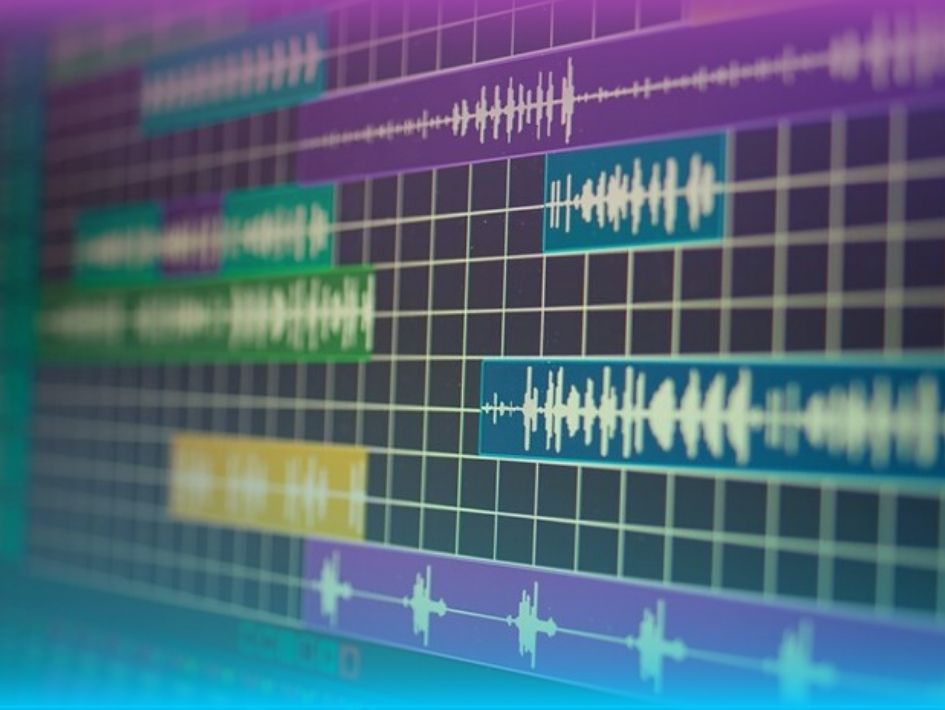Have you ever wondered what makes a guitar string, a drum, or even your voice sound like music? It's all about pitch and frequency. These two concepts are the key to understanding how sound changes into music, creating the songs we know and love.
From high-pitched flute notes to the low rumble of a bass, each sound has its own pitch and frequency that makes it unique. Ready to get into the world of sound? Let's find out how sound becomes music!
Understanding Sound: The Basics
Sound is a type of energy, just like light or heat. But instead of being something we can see or feel with our hands, sound is something we hear. Sounds are created when something vibrates, like the strings on a guitar or the
vocal cords in our throat.
These vibrations produce waves that move through the air. When these waves reach our ears, they cause our eardrums to vibrate, allowing us to hear sounds!
What is a Sound Wave?
Imagine dropping a pebble into a pond. The ripples that spread out from where the pebble landed are like sound waves. They travel outward in all directions. When something makes a sound, it sends waves through the air, and those waves are called sound waves.
These waves can move through other things, too, like water or solid objects. But we mostly hear them as they travel through the air.
The Highs and Lows of Sound
Pitch is a way of describing how high or low a sound seems to us. For example, when you hear a bird chirping, it sounds high. But when you hear a lion roar, it sounds low. That difference between high and low sounds is what we call pitch. Also, sounds that have specific pitches are called musical tones.
How Do We Measure Pitch?
It depends on how fast something is vibrating. Faster vibrations make higher sounds, while slower vibrations make lower sounds. So, if a violin string vibrates really fast, it makes a high-pitched sound. But if a drum skin vibrates slowly, it makes a low-pitched sound.
Musicians can change the tone of their musical instruments by adjusting the length or tightness of a string, the size of an instrument, or how fast they play. For example:
- A guitarist can press down on the strings at different points to make different tones.
- A flute player can change how much air they blow into their flute to change the tone.
Counting the Vibrations
Frequency is like a clock for sound. It measures how many vibrations (or cycles) happen in a second. We measure it in units called Hertz (Hz). The higher the vibration rate, the higher the pitch; the lower the vibration rate, the lower the pitch.
- High-Frequency Sounds. These are sounds with many vibrations per second, like a whistle or a bird's chirp. They have a high sound.
- Low-Frequency Sounds. These are sounds with fewer vibrations per second, like thunder or a bass drum. They have a low sound.
Fun Fact
Human ears can hear sounds from about 20 Hz to 20,000 Hz! As people get older, they often have trouble hearing high-frequency sounds. Some animals, like dogs and dolphins, can hear sounds much higher than we can!
How Pitch and Frequency Work Together to Make Music
When musicians play different notes, they're actually playing sounds with different tones and vibration rates. Imagine playing the piano. Each key you press has a unique tone. Lower keys have lower vibration rates, and higher keys have higher vibration rates.
Music is made up of patterns of pitches and frequencies that sound good together. Composers and musicians carefully choose notes to create melodies (the main tune) and harmonies (notes that sound good with the melody) by using different tones and frequencies.
Melody and Harmony
- Melody is the main tune you hear in a song. When you sing along to your favorite song, you're usually singing the melody.
- Harmony is made up of other notes that go well with the melody. They usually have different tones and vibration rates but sound pleasant together.
For example, when a singer is singing (the melody) and a guitarist is
playing chords (the harmony), their notes create a pleasant blend because they have chosen pitches and frequencies that work well together.
Why Does Pitch Sound Different on Different Instruments?
Have you ever noticed that even if two musical instruments play the same note, they sound different? That's because of something called timbre (pronounced "tam-ber"). Timbre is what makes a guitar sound different from a piano, even if they're both playing the same pitch at the same frequency. It's like the color or personality of the sound.
How Timbre Affects Sound
Timbre comes from how an instrument is made and how it produces sound. For example:
- A flute, one of the wind instruments, has a clear, airy timbre because of how air moves through it.
- A drum has a deep, rich timbre because of how the drum head vibrates.
Every instrument has a unique timbre, giving each one its own sound even if they play the same pitch and frequency.
Why Pitch and Frequency Matter in Music
Pitch and frequency aren't just for musicians—they're important for everyone who loves music! They help us recognize different songs, follow melodies, and even tell voices apart. For instance:
- Singers adjust their pitch to match the notes of a song.
- Instruments are tuned to specific frequencies to sound "in tune" when played together.
Music would be a mix of sounds if we didn't have pitch and frequency to help organize it!
Experiments to Understand Pitch and Frequency
Want to experience pitch and frequency for yourself? Try these fun experiments!
Rubber Band Guitar
Stretch a few rubber bands of different thicknesses across a box. Pluck each one and listen. You'll notice that thicker bands make lower-pitched sounds while thinner bands make higher-pitched sounds. That's because thicker bands vibrate slower, creating lower frequencies.
Bottle Whistles
Take a few bottles and fill them with different amounts of water. Blow across the top of each bottle and listen to the pitch. Bottles with more water make higher-pitched sounds because the air has less space to vibrate in, increasing the frequency.
These simple activities show how pitch and frequency change with different objects and materials. Plus, they're fun to do!
Summary
Pitch and frequency are what make music more than just noise. Pitch tells us if a sound is high or low, and frequency counts how many times a sound vibrates in a second. Together, they shape the music we listen to and enjoy.
From high-pitched whistles to low, deep drums, pitch and frequency bring variety and harmony to our world of sound. By understanding pitch and frequency, we can appreciate the magic behind every song and every instrument.
Explore More at Muzeg!
If you love learning about
music and want to explore even more,
visit Muzeg! Muzeg is dedicated to making music education accessible to everyone. Whether you're just starting or looking to improve your skills, Muzeg has resources to help you reach your musical goals.
Bottom Line
Music is all around us, from the notes of a piano to the chirping of birds. Pitch and frequency are the secret ingredients that change simple sounds into beautiful music. Whether you're listening to your favorite band or playing an instrument, understanding pitch and frequency helps you appreciate music on a whole new level.
The next time you listen to your favorite song or hum a tune, think about how different pitches and frequencies come together to make it sound just right. Try out different sounds, play with new notes, and have fun exploring music!


